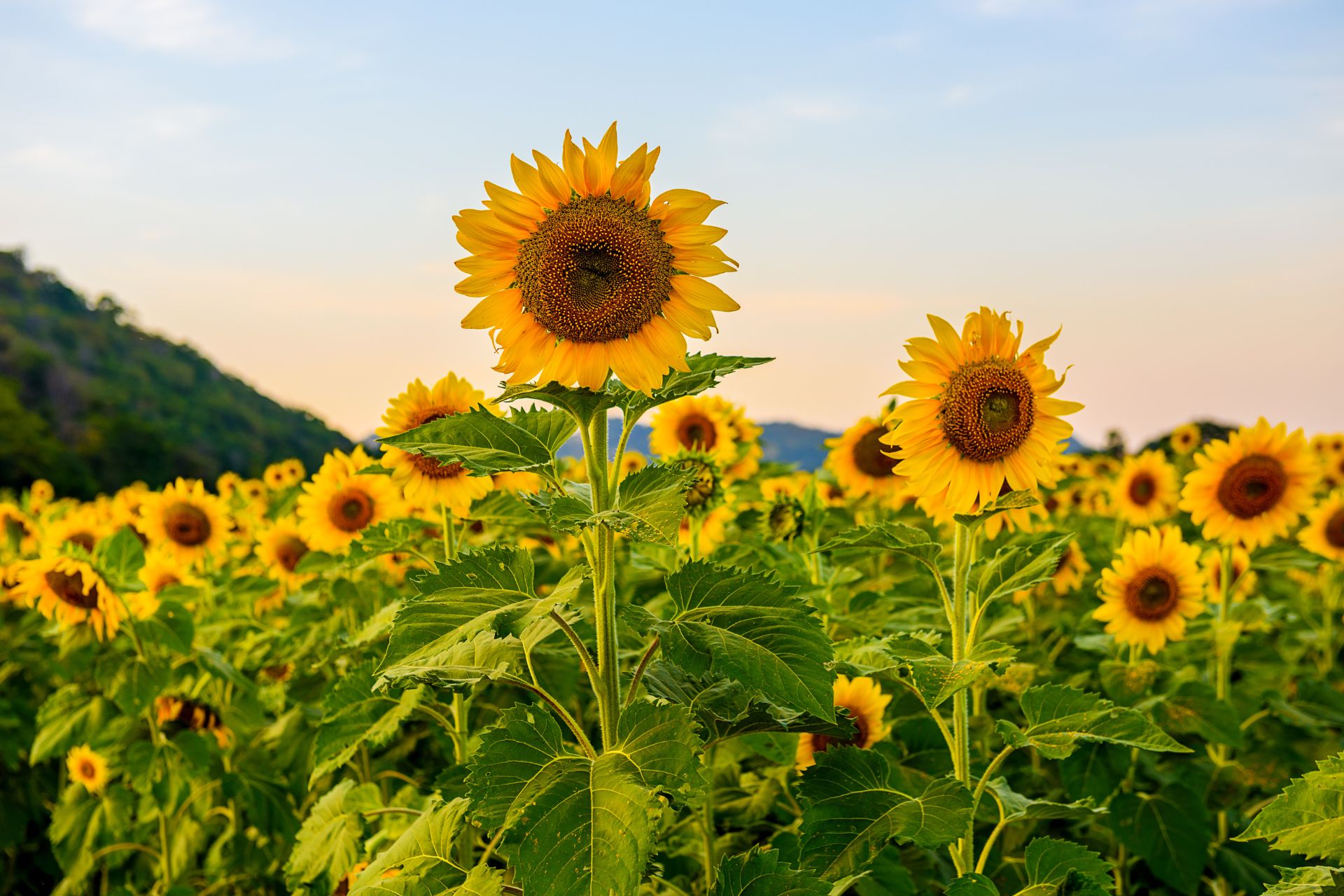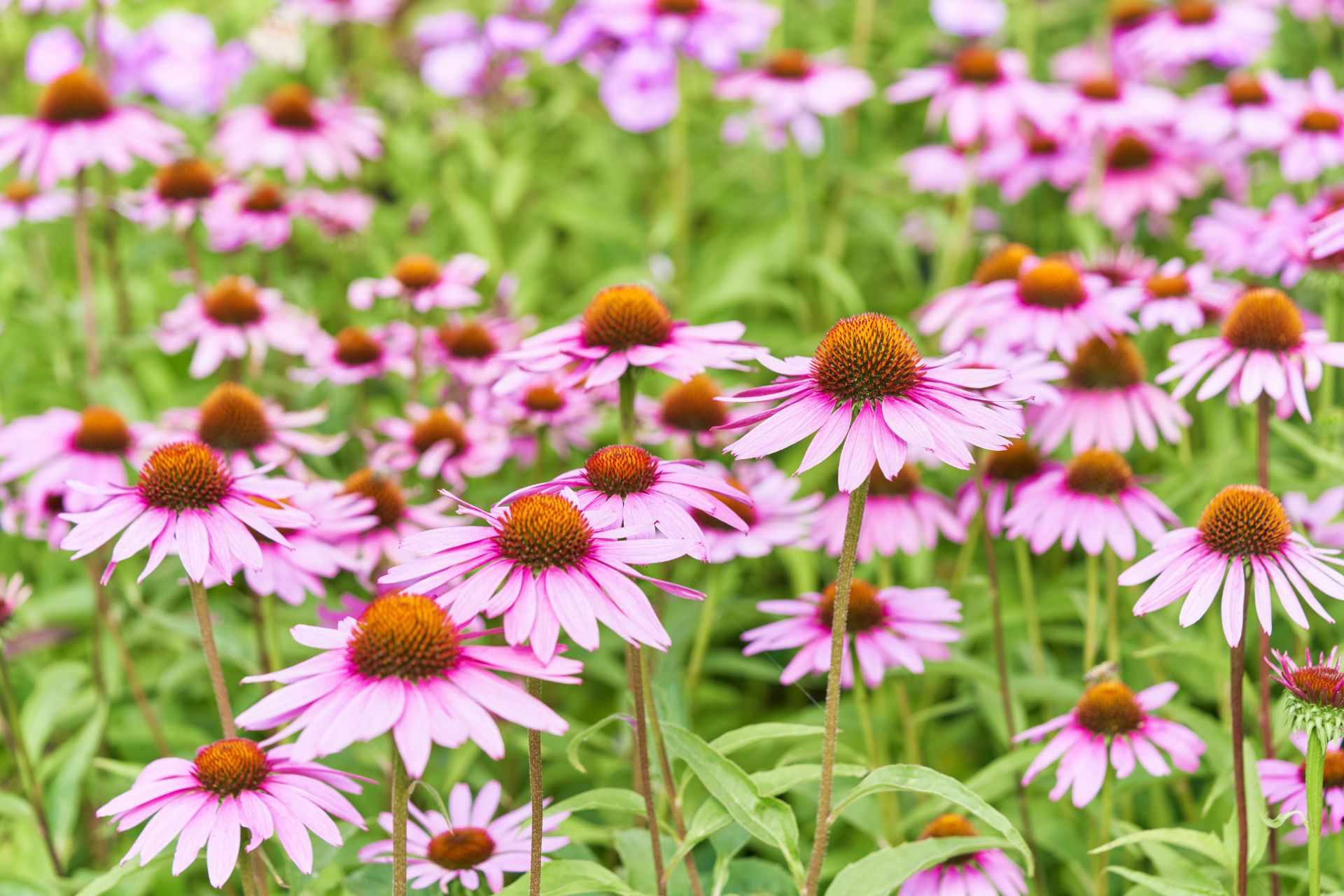Share

From Seed to Bloom: Your Comprehensive Guide to Growing Sunflowers
There’s hardly a flower that evokes feelings of joy and warmth as much as the sunflower. These striking flowers, with their radiant faces following the sun, are a testament to the beauty of nature. As your trusted local experts at Moana Nursery, we’re delighted to share a comprehensive guide on how you can successfully grow sunflowers, from seed to bloom, right here in Reno, NV.
Why Sunflowers?
Sunflowers (Helianthus annuus) are native to the Americas and thrive in sunny, hot conditions, making them an excellent choice for our Nevada gardens. They’re drought-tolerant, easy to care for, and their spectacular blooms make them a fantastic focal point in any landscape. Moreover, sunflowers are a haven for pollinators, encouraging a biodiverse environment in your garden.
Choosing Your Seeds
Sunflowers come in a surprising variety of sizes and colors. From towering ‘Mammoth’ varieties that can reach up to 12 feet in height to smaller ‘Teddy Bear’ sunflowers perfect for containers, there’s a sunflower for every garden. Some have traditional yellow petals, while others can be red, orange, or even striped.
Sowing the Seeds
When to Sow: Sunflowers are heat-loving plants. The best time to sow sunflower seeds is in late spring, once the soil has warmed to at least 50 to 55 degrees Fahrenheit.
Where to Sow: Choose a location that gets 6 to 8 hours of direct sunlight each day. Sunflowers aren’t overly fussy about soil but prefer a well-draining site.
How to Sow: Plant the seeds 1 inch deep and about 6 inches apart. If you’re planting a tall variety, give them more space. Water well after planting.
Caring for Your Sunflowers
Watering: Sunflowers are remarkably drought-tolerant, but they do grow best with regular watering. Deep, infrequent watering encourages a strong root system.
Fertilizing: While sunflowers aren’t heavy feeders, a light application of a balanced flower fertilizer can give them a boost, especially if your soil is poor.
Support: Taller varieties may need staking to help them stand tall, especially in windy locations.
Pests and Diseases: Keep an eye out for common pests like aphids and caterpillars. A strong spray of water can often dislodge these pests.
Enjoying Your Sun Flowers
Typically, sunflowers will bloom 80 to 120 days after planting, depending on the variety. Once your sunflowers open their faces to the sun, you can cut them for bouquets, leave them to add beauty to your garden, or allow them to go to seed for a tasty treat for your local bird population. In fact, it’s common for Finches to eat the sunflower leaves! Many customers bring in sunflower leaves thinking it’s a bug eating them, but many times it’s Finches.
Growing sunflowers from seed to bloom is an immensely rewarding gardening project that adds beauty, utility, and environmental value to your garden. As always, the team at Moana Nursery is here to provide expert advice and high-quality gardening supplies to make your gardening journey a success. Happy planting, and enjoy the sunshine that sunflowers bring to your yard!
Share

Let's delve into the world of self-watering pots and explore how they're changing the landscape of gardening.

Here are some tips for successful early-season gardening, including cold-tolerant herbs and veggies and frost protection strategies.

Instant Compost Tea is a game-changer for gardeners looking for an easy and effective way to boost the health of their plants and soil.

With the right techniques and plant selections, you can create a beautiful and thriving cut flower garden that adds color and life to the desert landscape. Here at Moana Nursery, we're thrilled to guide you through the process of designing your very own cut flower garden.
